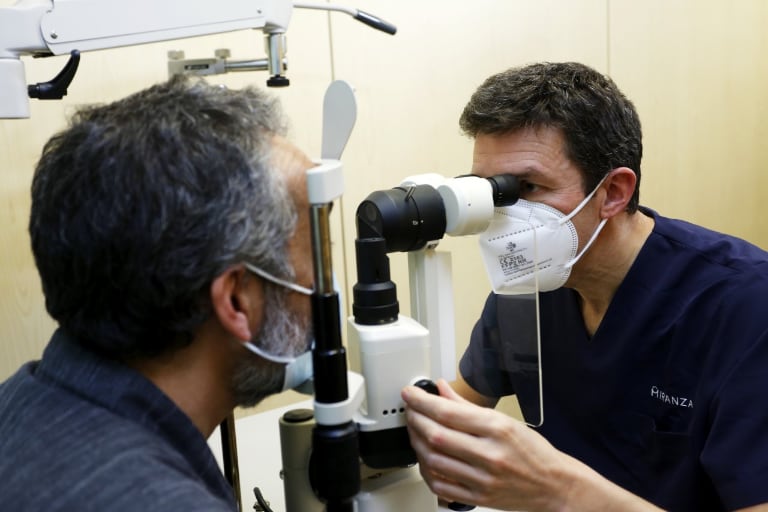
Early diagnosis and expert treatment are key to tackling retinal diseases
Retinal diseases are among the leading causes of vision loss. To find out more about their diagnosis, monitoring, and effective treatment, Dr. Miguel Ruiz Miguel, a retina specialist at Miranza Begitek and Miranza Ókular, gives us some key points to bear in mind.
One of the most important key points for the diagnosis of retinal diseases, according to the specialist, is to respect the frequency of check-ups, as spacing them out can lead to a poorer visual prognosis. This has happened in some patients who, due to different circumstances within the context of the pandemic, have not been able to keep their appointments with the ophthalmologist, despite the fact that, at Miranza clinics, we have applied all safety measures with the utmost rigor.
Dr. Ruiz Miguel explains that there is no single guideline for eye check-ups, although, once any retinal disease has been diagnosed, follow-up check-ups should be carried out as indicated by the specialist in each case, ranging from annual to monthly in some types of AMD or every 2-3 months for severe forms of diabetic retinopathy.
Even in cases where there is no diagnosis of retinal disease, it is essential not to lower our guard, especially in those over 65 and in people with diabetes, two target populations that require closer monitoring.
Risk factors in retinal diseases
According to the ophthalmologist at Miranza Begitek and Miranza Ókular, age is a key factor in several retinal diseases, such as AMD, although family history and lifestyle habits, such as smoking, having a diet poor in fruits and vegetables or being exposed to the sun for years without eye protection also come into play. Another risk factor to be taken into account is diabetes, which can cause diabetic retinopathy, a serious retinal disease that initially does not give any warning and can therefore only be detected by regular fundus examinations. High myopia – especially magna high myopia – can also lead to several retinal complications, including retinal detachment.
Patients with these risk factors should be especially vigilant for possible retinal diseases, whether or not they notice any warning symptom. These include difficulties in reading or seeing clearly and the distorted perception of images, in the case of damage to the macula or central area of the retina (AMD, macular epiretinal membranes, etc.) and the appearance of floaters, lights, or a black shadow in the visual field, in the case of retinal detachment.
Present and future treatment
Twenty or twenty-five years ago, retinal diseases were often spoken of as something that did not have a solution, explains Dr. Ruiz Miguel, who highlights the great progress that has been made in this regard. For instance, for AMD or diabetic retinopathy, there are intraocular injections of drugs that are administered directly into the eye, every so often, and make it possible to slow down their progression and even recover some of the impaired vision. Moreover, these drugs will have an increasingly effective and lasting effect on retinal diseases.
In the case of retinal detachment and epiretinal membranes, treatment is surgical, with highly complex techniques, such as vitrectomy. The results are satisfactory in a high percentage of cases, although tackling the problem early with an expert surgeon is essential.
As for retinal dystrophies, not many options are applied at the clinic yet, but gene therapies have already been introduced against specific alterations in the genes, such as those causing a dystrophy known as Leber’s congenital amaurosis. This opens the door to a promising new line of therapies, which will be accessible to more patients with inherited retinal disorders in the near future.
Major retinal diseases
Although there are many pathologies and lesions that can damage the retina, the ophthalmologist highlights AMD (age-related macular degeneration), a disease associated with old age, which impairs central vision and is suffered by some 700,000 people in Spain (around 5% of those over 50).
Another relevant disease due to its potential severity is retinal detachment, whereas macular epiretinal membranes (a kind of “cling film” that wrinkles the centre of the retina) and vascular disorders, such as diabetic retinopathy, are also very common. Finally, inherited retinal dystrophies represent a large group of diseases of genetic origin that affect 1 in every 3,000 people and often appear in young patients.